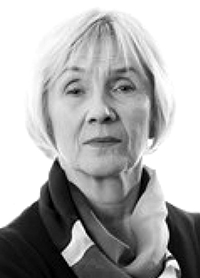BODY BALANCE OF MALE FOOTBALL PLAYERS AGED 7-10: PILOT STUDY
Keywords:
balance, children, football players.Abstract
Objective of the study – body balance is an element needed to perform activities of daily living and do sports. The aim of this study was to evaluate and compare body balance of male football players aged 7-10.
Methods and structure of the study. The study involved 92 football players aged 7-10 (7 years n = 21; 8 years n = 26; 9 years n = 29; 10 years n = 16), members of TOP-54 Football Academy in Biala Podlaska, Poland. Postural balance was tested using ZEBRIS FDM-2 (Force Distribution Measurement) measuring system with WinFDM software during free barefoot standing with eyes open.
Results and conclusions. In the majority of the analysed parameters, significantly higher values of posturographic parameters were found in younger players (7 years) compared to their older peers (10 years). The observed differences probably stemmed from the immaturity of the postural control system in younger boys. It may be related to the lack of ability to fully utilize sensory information. Football training contributes to proper physical and motor development of children and positively influences the formation of the balance control system. An important aspect is a proper selection of loads to ensure that training is beneficial and supports natural ontogenetic development of players at each stage of training.
References
Barlett D. Validity and reliability of a pediatric reach test. Pediatric Therapy, 2003, No. 15. pp. 84-92.
Bukowska J.M., Jekiełek M., Kruczkowski D., Ambroży T., Jaszczur-Nowicki J. Biomechanical Aspects of the foot arch, body balance and body weight composition of boys training football. International Journal of Environmental Research and Health Public, 2021, No. 18. 5017. https://doi.org/103390/ijerph18095017
Kowalczyk M., Tomaszewski P., Bartoszek N., Popieluch M. Three-week intensive neuromuscular training improves postural control in professional male soccer players. Polish Journal Sport and Tourism, 2019, No. 26. Vol. 2. pp. 14-20.
Peterson M.L., Christou E., Rosengren K.S. Children achieve adult-like sensory integration during stance at 12-years-old. Gait Posture, 2006, No. 23. Vol. 4. pp. 455-463. https://doi.org/10.1016/j.gaitpost.2005.05.003
Plandowska M., Lichota M., Górniak K. Postural stability of 5-year-old girls and boys with different body heights. PlosOne, 2019, No. 14. Vol. 12. e0227119. https://journals.plos.org/plosone/article?id=10.1371/journal.pone.0227119
Riach C.L., Starkes J.L. Velocity of centre of pressure excursions as an indicator of postural control systems in children. Gait&Posture, 1994, Vol. 1. pp. 167-172.
Sadowska D., Sacewicz T., Lichota M., Krzepota J., Ładyga M. Static postural balance in modern pentathletes: A pilot study. International Journal of Environmental Research and Public Health, 2019, No. 16. Vol. 10. 1760. https://www.mdpi.com/1660-4601/16/10/1760
Sadowska D., Lichota M., Sacewicz T., Krzepota J. Influence of running phases on the postural balance of modern pentathlon athletes in a laser run event. International Journal of Environmental Research and Public Health, 2019, No. 16. Vol. 22. 4440. https://www.mdpi.com/1660-4601/16/22/4440
Sadowska D., Sacewicz T., Lichota M., Krzepota J. Postural balance during quiet stance and standing shooting position in biathletes. Acta Kinesiologica, 2020, No. 14. Vol. 2. pp. 79-85. http://actakinesiologica.com/postural-balance-during-guiet-stance-and-standing-shootuing-position-in-biathletes/
Sobera M., Rutkowska-Kucharska A. Postural control in female rhythmic gymnasts in selected balance exercises: a study of two cases. Polish Journal of Sport and Tourism, 2019. No. 26. Vol. 1. pp. 3-7.
Starosta W. Motor coordination skills, their significance, structure, conditioning and formation. International Association of Sport Kinetics, 2003, Warsaw. [in Polish]
Tringali M., Winer-Vascher S., Pia Bucci M. Developmental study identifies the age at which the processes involved in the perception of verticality and in postural stability occur. Acta Pediatrica, 2016, No. 106. Vol. 1. pp. 55-60.
https://pubmed.ncbi.nlm.nih.gov/27689682/
Verbecque E., Vereeck L., Hallemns A. Postural sway in children: A literature review. Gait&Posture, 2016, No. 49. pp. 402-410.
Wilczyński J. Body Composition and postural stability in goalkeepers of the Polish National Junior Handball Team. Polish Journal of Sport and Tourism, 2018, No. 15. Vol. 3. pp. 23-28.
Ying-Shuo Hsu, Chen-Chieh Kuan, Yi-Ho Young. (2009) Assessing the development of balance function in children using stabilometry. International Journal of Pediatric Otorhinolaryngology, 2009, No. 73. Vol. 5. pp. 737-740. https://doi.org/10.1016/j.ijporl.2009.01.016

Published
Versions
- 17-01-2022 (4)
- 11-01-2022 (3)
- 07-01-2022 (2)
- 01-12-2021 (1)

